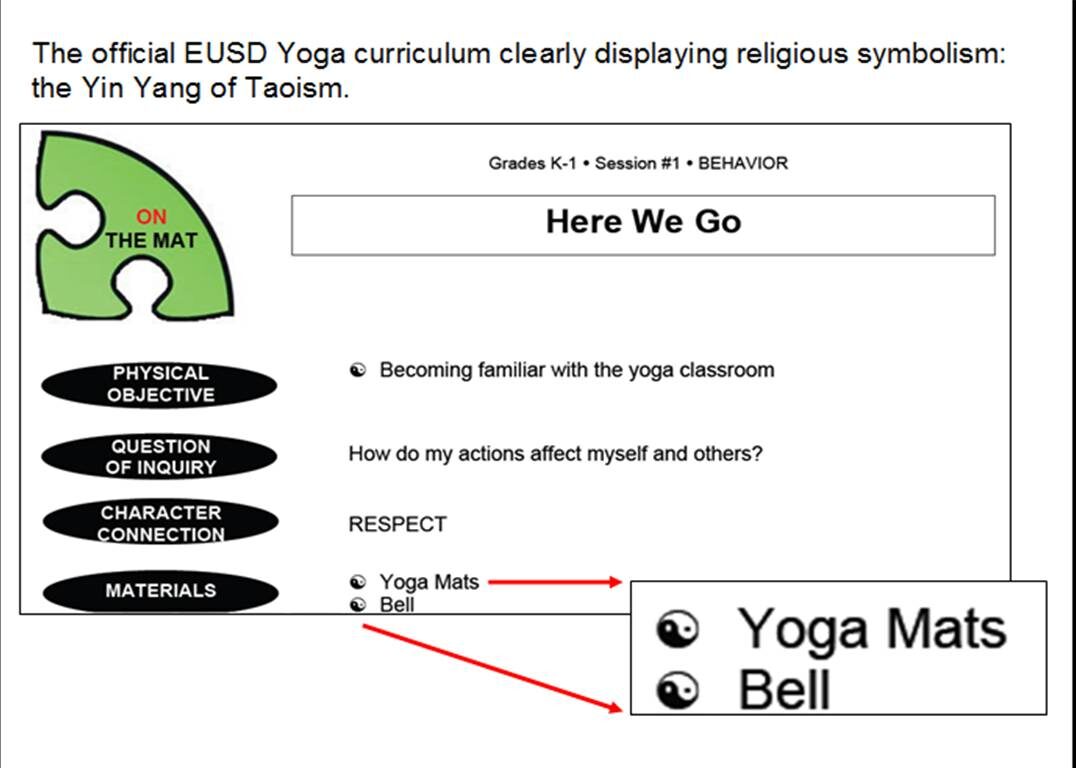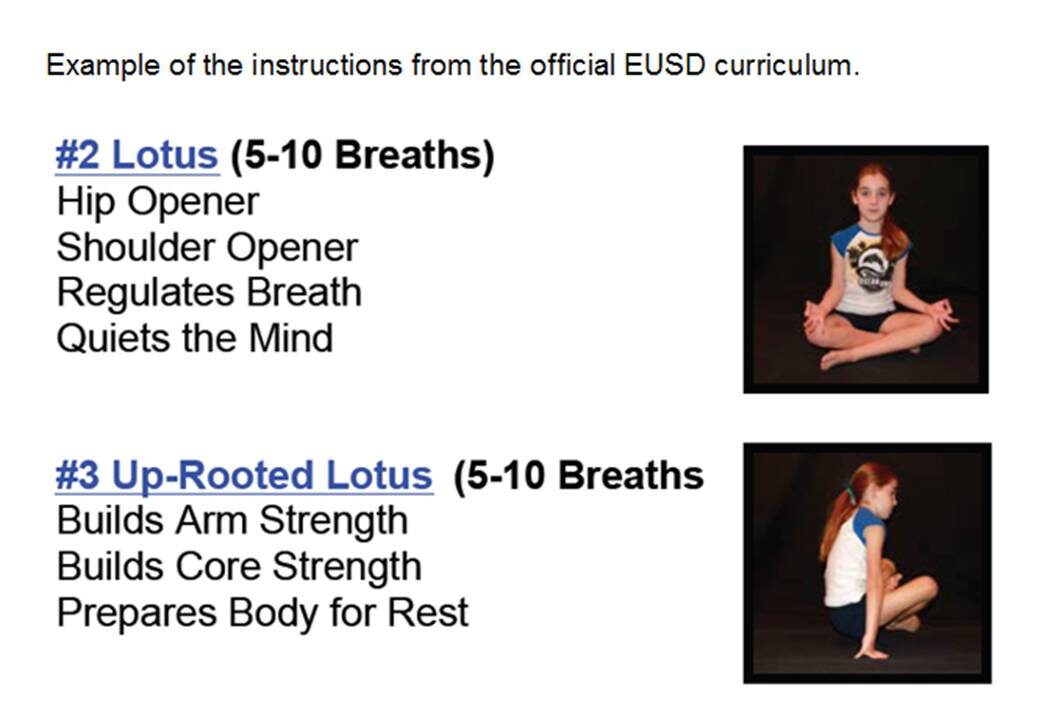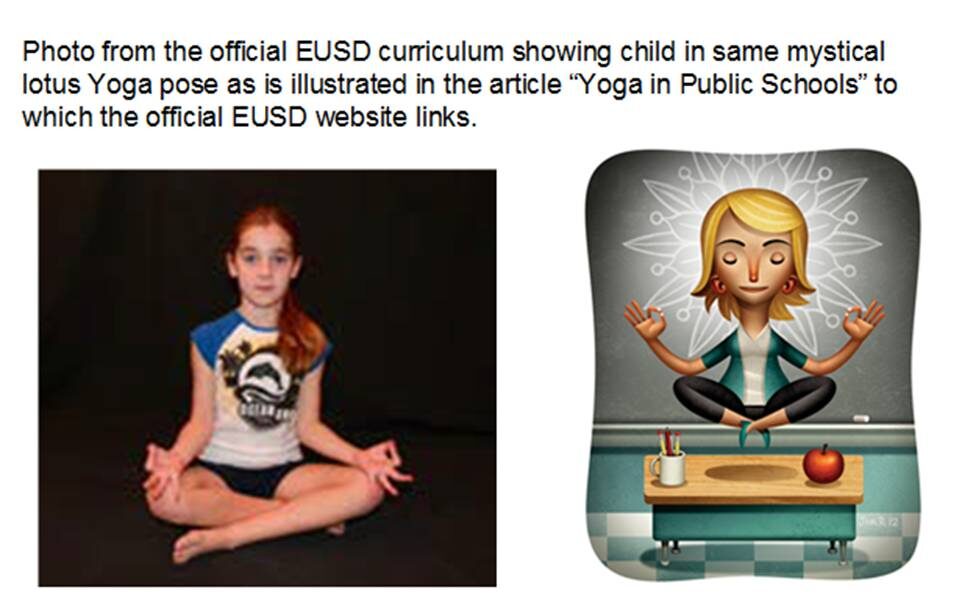This article inaugurates a series on Yoga as, yet again, the issue of Yoga in public schools has reared its mystical head. In this segment we will consider; just what is Yoga?
Yug is a Sanskrit term that means to yoke and is the root word of Yoga; a yoke is a frame for harnessing animals to that which they are pulling. Thus, Yoga is meant to yoke a person to Hindu gods/goddesses.
Some form of what we now call Yoga has existed since circa 3,000 BC and the person generally attributed as having systematized it, in the texts Yoga Sutras, is simply known as Patanjali and lived circa 3-2 century BC. He succinctly listed some 200 points the bulk of which pertain to how to control the mind.
Hinduism is not “one religion” in the manner whereby we generally think of religion but various theological views which revolve around certain commonalities such as the karmic concept of moral cause and effect which leads to samsara or, the cycle of reincarnation and finally a shared practice of various forms of Yoga.
Patanjali systematized Yoga premised upon a generally held view of India in his day which is a dualistic philosophy known as Samkhya / Sankhya. This philosophy postulates two, a dual, view of relatity which is that there is the individual, immaterial, eternal, and indestructible souls known as parushas and the is also the material realm known as prakriti which is composed of the three basic elements or gunas one of which represents truth and/or goodness which is sattva, there is passion and/or activity which is raja and there is darkness and/or inertia which is tamas.
Employing common parlance; think of energy condensing in to matter. Well, the idea is that when the gunas are in harmony there exists only energy thus, the prakriti only manifests as the material realm when an imbalance occurs.
Whichever guna is dominant in the imbalance is the one which primarily manifests as the characteristic, or the character, of the particular material realm. In this way sometimes a material reality manifests wherein truth/goodness—sattva prevails or else passion/activity—raja or darkness/inertia—tamas. When they again come into harmony the material realm once again becomes pure energy and the cycles cycle again and again.
Recall that within this system we humans are parushas and we can be entrapped to the material manifestation—prakriti. This is where the material rubber hits the ethereal road.
Many Westerners who falsely claim that Yoga is not religious attempt to water it down to the point that it is presented simply as exercise which is beneficial to our state of mind. And yet, this is precisely the point of the religious nature of Yoga. Recall that control the mind is the main factor here and not, by the way, stretching. If Yoga was not religious it would just be called stretching and, in fact, when just stretching is emphasized it is because someone is attempting to hide its religious nature—this is something upon which we will focus in future segments of this series.
When we immaterial parusha souls enagage the material prakriti we can become entangled in it—in a manner of speaking. When this happens we generate an ego, become mindful, literally generating a mind and thus convince ourselves that we are not immaterial souls but material organisms, beings.
There are various concepts of reincarnation and the one associated here entails that our immaterial souls transmigrate from one life to another, from one physical/material body to another. Via these cycles we get caught up in the three gunas and so Yoga was systematized so as to have our souls reach the state of freedom from the material realm; this deliverance is known as moksha.
The ego/mind is focused upon the material realm and must be disconnected via our control of it. You may have noticed that many depictions of the Buddha depict him with eyes at half-mast—half opened and half closed (note that Buddha was an Indian who modified certain “Hindu” tenets and developed what has come to be known as Buddhism).
His eyes are that way in order to show that he has reached the level of disconnection from the material realm. Some seem to think that reincarnation and karma are about gaining lots of “good karma.” It is not rather, it is about not having any karma at all. This is accomplished by becoming utterly disconnected from the material realm and thus, being utterly unmoved by any and all things. One goes not only beyond darkness and passion but also beyond goodness. All is to be discarded.
The Buddha taught succinctly that to cease from suffering one must cease from desire—of course, you would have to have a desire to cease from desire so…
Yoga is meant to have the mind detach from its preoccupations with the material realm. For example, if you look at Yoga poses you will notice that it is not mere stretching but that they are very extreme postures. These have various purposes, such as specific communion with Hindu gods/goddesses, manifesting the rise within the spine of the serpent energy—kundalini and getting the mind, or rather the immaterial soul, to recognize that it is not the physical material body. The poses are extreme so as to encourage a separation between the body and the soul.
Here are some relevant books:
Knowing the Facts about Yoga by John Ankerberg and John Weldon
Should Christians Practice Yoga? by John Weldon
A DVD: Yoga Uncoiled From East to West by Caryl Matrisciana
For more info see the following videos:
Yoga as Christian Occult Practice by Caryl Matrisciana
The Yoga Boom: What are Christians to do? by Elliot Miller
For more background and consideration of some Hindu philosophy see the video:
Bill Honsberger – Hinduism and Advaita Vedanta: the Roots and Fruit of a Movement




